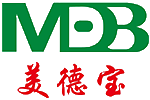-
-
Company Profile
-
Waterproof breathable membrane
Vapor barrier film
Barrier film
Reflective insulation film
Understanding the Importance of Vapor Barrier Film in Construction
Release time:
2025-08-08
Understanding the Importance of Vapor Barrier Film in Construction
Table of Contents
- What is Vapor Barrier Film?
- Why is Vapor Barrier Film Essential in Construction?
- Types of Vapor Barrier Films
- Applications of Vapor Barrier Films
- Installation Best Practices for Vapor Barrier Films
- Common Mistakes to Avoid When Using Vapor Barriers
- Benefits of Using Vapor Barriers in Construction
- Frequently Asked Questions
What is Vapor Barrier Film?
Vapor barrier film is a crucial material used in construction to control moisture and protect building structures. Typically made from polyethylene or other waterproof materials, vapor barriers are installed in areas where moisture is a concern. Their primary function is to prevent water vapor from infiltrating walls, ceilings, and floors, which can lead to mold growth and structural damage.
Why is Vapor Barrier Film Essential in Construction?
One of the main reasons vapor barrier film is essential in construction is to **prevent moisture damage**. When water vapor enters a building, it can condense on cold surfaces, leading to issues such as mold, mildew, and rot. These conditions not only compromise the integrity of the structure but also pose health risks to occupants. By using vapor barrier films, builders can significantly reduce these risks and enhance the longevity of their projects.
Furthermore, vapor barriers contribute to **energy efficiency**. By minimizing the amount of moisture that enters a building, they help maintain a consistent indoor climate. This can lead to lower heating and cooling costs, making vapor barriers a financially beneficial investment for homeowners and builders alike.
Types of Vapor Barrier Films
When selecting a vapor barrier film, it's important to understand the different types available on the market. Each type serves a unique purpose and is suitable for specific applications.
Polyethylene Vapor Barriers
Polyethylene vapor barriers are the most commonly used type. They are durable and resistant to moisture, making them ideal for residential and commercial applications. These barriers are available in various thicknesses, allowing builders to choose the right option for their specific needs.
Foil-Faced Vapor Barriers
Foil-faced vapor barriers are often used in insulation systems. The foil reflects heat, which can improve energy efficiency by keeping buildings warmer in the winter and cooler in the summer. These barriers are particularly effective in areas with extreme temperature fluctuations.
Rubberized Vapor Barriers
Rubberized vapor barriers provide excellent adhesion properties and flexibility. They are often used in areas that require a strong bond or in applications where the barrier will be exposed to movement or shifting materials. These barriers are particularly beneficial in commercial construction and industrial applications.
Applications of Vapor Barrier Films
Vapor barrier films are versatile and can be used in various construction applications, including:
- **Foundation Walls**: Protecting below-grade walls from moisture intrusion.
- **Crawl Spaces**: Preventing moisture from infiltrating living spaces above.
- **Roofs**: Protecting insulation and structural elements from condensation.
- **Walls and Ceilings**: Maintaining healthy indoor air quality by controlling moisture levels.
Understanding the specific applications of vapor barrier films helps builders select the right material for their projects, ensuring optimal performance.
Installation Best Practices for Vapor Barrier Films
Proper installation of vapor barrier films is critical to their effectiveness. Here are some best practices to follow:
1. **Choose the Right Thickness**: Select a vapor barrier film thickness that suits your project's needs. Thicker films offer greater durability and moisture resistance.
2. **Seal All Seams**: Use tape or adhesive to seal seams between vapor barrier sections. This prevents moisture from seeping through gaps.
3. **Install Over Insulation**: Place vapor barriers over insulation in walls and ceilings to minimize moisture penetration.
4. **Avoid Wrinkles and Gaps**: Ensure the vapor barrier is smooth and tightly installed to prevent moisture infiltration.
5. **Consult Local Building Codes**: Always follow local building codes and regulations regarding vapor barrier installation to ensure compliance.
By adhering to these best practices, builders can maximize the effectiveness of vapor barriers in their construction projects.
Common Mistakes to Avoid When Using Vapor Barriers
Even experienced builders can make mistakes when it comes to vapor barrier installation. Here are common pitfalls to avoid:
- **Neglecting Local Climate Conditions**: Different regions have varying moisture levels. Failing to consider local conditions can lead to improper installation and reduced effectiveness.
- **Inadequate Sealing**: Rushing through sealing seams and joints can result in significant moisture infiltration.
- **Ignoring Manufacturer Guidelines**: Each vapor barrier type has specific installation instructions. Not following these guidelines can compromise performance.
- **Overlapping Incorrectly**: Overlapping seams in the wrong direction can allow moisture to penetrate the barrier.
By being aware of these common mistakes, builders can take proactive measures to ensure the successful installation of vapor barriers.
Benefits of Using Vapor Barriers in Construction
Incorporating vapor barriers into construction projects offers numerous advantages, including:
- **Moisture Control**: Effective moisture control prevents mold growth and protects structural integrity.
- **Energy Efficiency**: By minimizing air leaks and moisture intrusion, vapor barriers contribute to overall energy efficiency, leading to cost savings.
- **Healthier Indoor Air Quality**: Reducing moisture prevents the growth of mold and allergens, creating a healthier environment for occupants.
- **Longer Lifespan of Building Materials**: Protecting materials from moisture extends their lifespan and reduces the need for costly repairs.
Emphasizing these benefits can help builders and homeowners appreciate the essential role of vapor barriers in modern construction.
Frequently Asked Questions
1. What is the primary function of vapor barrier film?
The primary function of vapor barrier film is to prevent moisture from penetrating building structures, thereby reducing the risk of mold growth and structural damage.
2. Where should vapor barriers be installed?
Vapor barriers should be installed in areas prone to moisture, such as foundation walls, crawl spaces, ceilings, and roofs, to protect insulation and structural elements.
3. How do I choose the right vapor barrier film for my project?
When selecting a vapor barrier, consider factors such as thickness, material type, and local climate conditions. Consult with professionals if needed to ensure you make the right choice.
4. Can vapor barriers be reused?
In most cases, vapor barriers are designed for one-time use. However, if properly removed and stored, they may be reused, but this is not common practice.
5. What are the consequences of not using a vapor barrier?
Not using a vapor barrier can lead to significant moisture problems, including mold growth, mildew, and damage to building materials, resulting in costly repairs and health risks.
Conclusion
In summary, vapor barrier film plays an indispensable role in modern construction. Its ability to control moisture, enhance energy efficiency, and protect building materials cannot be overstated. By understanding the various types of vapor barriers, their applications, and best installation practices, builders can ensure their projects are not only structurally sound but also safe and energy-efficient. Emphasizing the importance of vapor barriers in construction helps create healthier living environments and protects investments for years to come. Proper education and implementation of vapor barrier systems will ultimately lead to a more sustainable and resilient built environment.Previous article
recommend News
Newest Waterproof Breathable Membrane
2025-07-28
Sell one
Kelly Ho
15133606577
kelly.ho@tjmeidebao.com
Sales two
All- All
- Product Management
- News
- Introduction
- Enterprise outlets
- FAQ
- Enterprise Video
- Enterprise Atlas
Sweep the attention to us

COOKIES
Our website uses cookies and similar technologies to personalize the advertising shown to you and to help you get the best experience on our website. For more information, see our Privacy & Cookie Policy
COOKIES
Our website uses cookies and similar technologies to personalize the advertising shown to you and to help you get the best experience on our website. For more information, see our Privacy & Cookie Policy
These cookies are necessary for basic functions such as payment. Standard cookies cannot be turned off and do not store any of your information.
These cookies collect information, such as how many people are using our site or which pages are popular, to help us improve the customer experience. Turning these cookies off will mean we can't collect information to improve your experience.
These cookies enable the website to provide enhanced functionality and personalization. They may be set by us or by third-party providers whose services we have added to our pages. If you do not allow these cookies, some or all of these services may not function properly.
These cookies help us understand what you are interested in so that we can show you relevant advertising on other websites. Turning these cookies off will mean we are unable to show you any personalized advertising.
Copyright: Tianjin Medabao Technology Co., Ltd.
Business License
-


